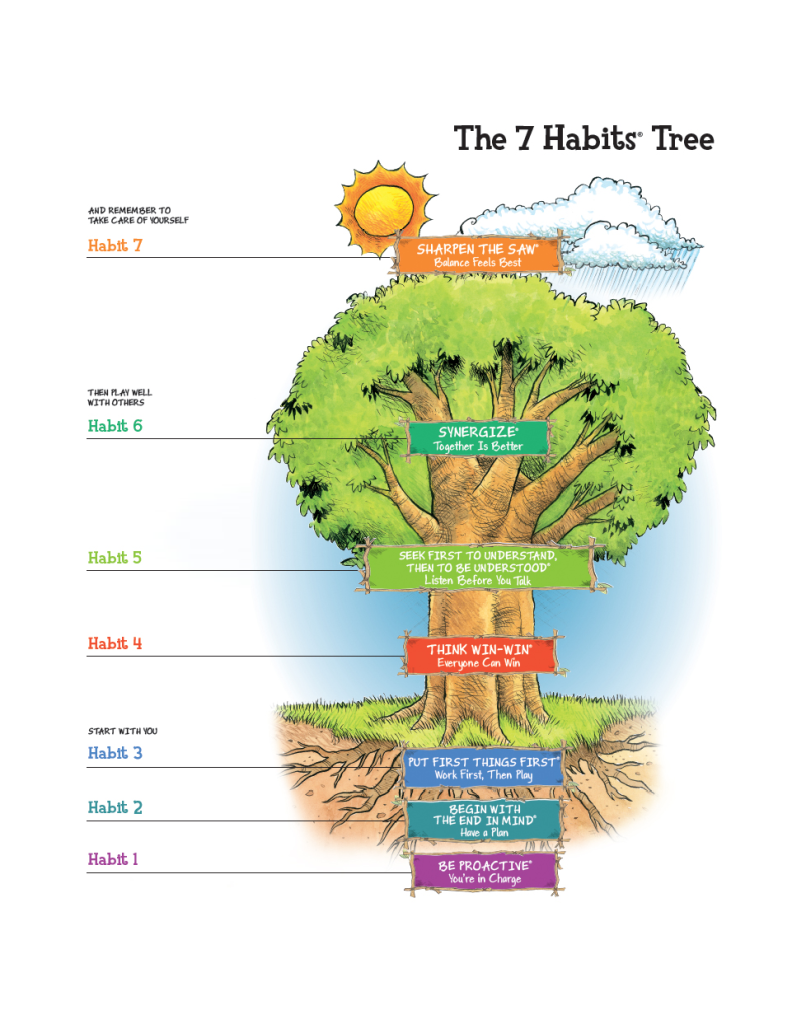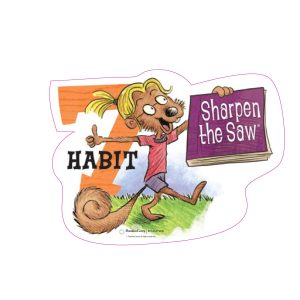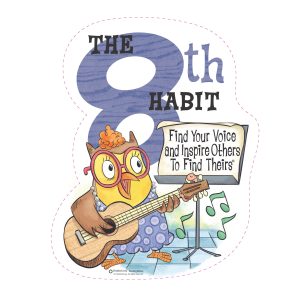What is The Leader in Me?
The Leader in Me is Franklin Covey’s whole school transformation process. It teaches 21st-century leadership and life skills to students and creates a culture of student empowerment based on the idea that every child can be a leader. See Questions and Answers about The Leader in Me.
How is it different?
Four reasons why The Leader in Me leadership model works so well when so many other reform initiatives don’t:
- It embodies a different paradigm.
- It works from the inside out.
- It uses a common language—The 7 Habits.
- The implementation is ubiquitous.
What is the impact?
Although The Leader in Me is a fairly new process, research on The Leader in Me is advancing quickly and is very promising. Initial evaluation studies conducted by third-party researchers, as well as related studies and articles, are available here.
A New Mindset
Instead of seeing children through the lens of a normal distribution curve—some kids are naturally smart and others are not—The Leader in Me paradigm sees that every child is capable, every child is a leader. This paradigm changes everything.
Content from The 7 Habits of Highly Effective People is a key component of The Leader in Me. The 7 Habits is a combination of universal, timeless principles of personal and interpersonal effectiveness, such as responsibility, vision, integrity, teamwork, collaboration, and renewal, which are secular in nature and common to all people and cultures. Here’s how the 7 Habits are taught to students in an age-appropriate format within The Leader in Me process:

You’re in Charge: I am a responsible person. I take initiative. I choose my actions, attitudes, and moods. I do not blame others for my wrong actions. I do the right thing without being asked, even when no one is looking.

Work First, Then Play: I spend my time on things that are most important. This means I say no to things I know I should not do. I set priorities, make a schedule, and follow my plan. I am disciplined and organized.
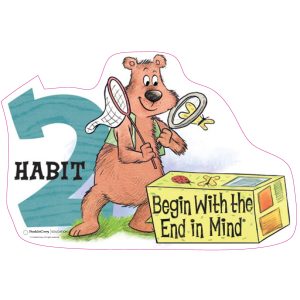
Have a Plan: I plan ahead and set goals. I do things that have meaning and make a difference. I am an important part of my classroom and contribute to my school’s mission and vision. I look for ways to be a good citizen.

Everyone Can Win: I balance courage for getting what I want with consideration for what others want. I make deposits in others’ Emotional Bank Accounts. When conflicts arise, I look for third alternatives.
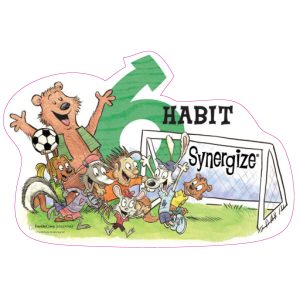
Together Is Better: I value other people’s strengths and learn from them. I get along well with others, even people who are different than me. I work well in groups. I seek out other people’s ideas to solve problems because I know that by teaming with others we can create better solutions than any one of us can alone. I am humble.
You are your child’s first and best teacher.
So that you are supported, we’re providing parents and guardians with information about the universal, timeless principles found in The Leader in Me process, as well as activities you can put into practice at home to teach your student to become a leader.
Schools and districts make the decision to implement The Leader in Me; however, parents play an important role in supporting their children in the process.
Here we list a sampling of activities listed by habit that will help you develop your child as a leader. For more activities, download a copy of The Leader in Me Parent Guide.
| Habit | Purpose | Family Activity |
| Habit 1: Be Proactive | Part of being proactive is stopping to think before we act. Sometimes, we react to a situation immediately, without taking time to think about the results of our actions. | Role-play different situations with your child that will provide them the opportunity to think before they act. |
| Habit 2: Begin With the End in Mind | Having an end in mind helps your child be able to have a purpose for their goal and for the specific steps that will help them achieve it. | As a family (or with an individual child), choose an area that needs improvement. The area of improvement, or the broad goal, becomes your end in mind. Then think of specific steps that will lead to achieving this goal. |
| Habit 3: Put First Things First | Putting First Things First means to decide what is most important and to take care of that first. Thinking about what needs to be done tomorrow or by the end of the week can be overwhelming, especially for children. Learning to think of which things are the most important and taking care of them first allows children (and adults) to be less stressed. | A planner is a great organizational tool to write down and plan ahead for what is most important. Help your child find and use a simple planner. This could be one you buy at the store or a simple notebook that your child decorates. |
| Habit 4: Think Win-Win | Thinking Win-Win is the belief that everyone can win. It’s not you or me—it’s both of us. By working with your child to come up with a solution, will help you both be happier in the situation and work through the conflict better each time. | Think of an ongoing conflict you tend to have with your child (homework, cleaning his or her room, feeding the dog) and then discuss a win-win solution to the conflict. Write down the solution and then remind each other of it the next time the situation arises. |
| Habit 5: Seek First to Understand, Then to Be Understood | Seeking First to Understand, Then to Be Understood means that it is better to listen first and talk second. This habit is taught best by introducing listening as a skill that should be practiced. | You can teach listening skills to your children by modeling effective listening. With an older child, you can talk to him or her about an issue you always argue about and say, “Help me understand your point of view.” Then really listen without interruptions. When your child is finished, repeat in your own words what you heard until he or she acknowledges feeling understood. Then it’s your turn to speak and your child’s turn to listen. |
| Habit 6: Synergize | Synergy is when two or more people work together to create a better solution than either would have thought of alone. Use this activity to see if you can reach a better solution than either of you would have come up with alone. | With your children, choose a problem you may have (dividing family responsibilities, keeping track of homework completion, following curfew) and use the Synergy Action Plan to summarize your child’s solution and your solution:Define the problem.Share your views.Think of solutions.Choose the best solution together. |
| Habit 7: Sharpen the Saw | Sharpening the Saw is about having balance in all areas of your life. Talk with your child about areas of his or her life that might be out of balance and find ways to put more focus on that area. | For younger children, you could develop a “Sharpen the Saw” activity center in your home that includes arts and crafts supplies, puzzles, classical music and books.For teens, you can encourage them to journal, take a break from technology, or start a new hobby.Physical activity is also an important part of finding balance. Find something fun and active you and your children can do together such as riding bikes, going on a hike or participating in a sport. |
Statement regarding CASEL Certification
The Collaborative for Academic, Social, and Emotional Learning (CASEL), the world’s leading organization in the practice of promoting integrated academic, social, and emotional learning for all children, conducted an extensive review of Leader in Me. CASEL determined that the Leader in Me training, support, and materials offer their highest level of support to schools across all five of their recognized settings; classroom, school, family, community, and general. As a result of their review and the research evidence, CASEL recently endorsed Leader in Me as a recommended evidence-based social-emotional learning (SEL) solution.
Questions?
Contact Jane Sullivan – Principal



